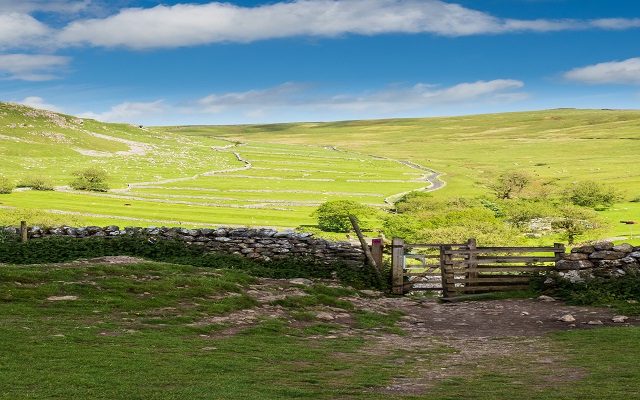Land Business Update | Week Commencing 1st April 2024
Farming
Much lower profits forecast for English farms in 2023/24
Farm Business Income is the government’s main measure of the net profits earned by farms from farming, agri-environment, Basic Payments and diversification. The forecasts for the year that includes harvest 2023 are based on information available in early February 2024 for prices, yields and input costs. The estimates are for large falls in profits, although for many sectors this is from the exceptional profits of 2021 and 2022. That said, profit levels are also below the five-year average for 2016/17 to 2020/21, which is a period before many of the changes to farm support had happened.
Cereal farm profits have fallen as crop prices have fallen back to more usual levels and cropped area has fallen. This was compounded by a drawn-out harvest and lower yielding crops. For dairy, profits fell due to lower milk prices as input costs stayed constant.
| £ net income per farm per year (current prices) | 2020/21 | 2021/22 | 2022/23 | 2023/24 forecast | % change 2022 to 23 | Five-year ave 2016 to 21 | % change Five-year ave to 23 |
| Cereals | 71,700 | 120,100 | 150,400 | 34,000 | -77% | 61,833 | -45% |
| General cropping | 66,900 | 145,400 | 125,200 | 53,000 | -58% | 84,217 | -37% |
| Dairy | 92,500 | 140,200 | 229,200 | 50,000 | -78% | 85,320 | -41% |
| Lowland livestock farms | 18,400 | 34,000 | 21,600 | 23,000 | 5% | 15,630 | 47% |
| Upland livestock farms | 33,400 | 42,900 | 25,400 | 26,000 | 1% | 25,404 | 2% |
| Mixed | 40,200 | 74,000 | 68,000 | 37,000 | -46% | 44,792 | -17% |
Farm balance sheets and Return on Capital Employed in England
This is interesting analysis from Defra, based on data from the Farm Business Survey. The headlines are below for the average farm in 2022/23. However, it is worth digging into the data in more detail by farm type and performance level.
- Average debts (or liabilities) are rising, however the average farm’s ability to cover that debt (known as liquidity) is also increasing, which is positive and a long-term trend.
- Net interest payments are @ 8% of Farm Business Income (or net profits). This is 2% more than in 2021/22 and is linked to Bank Rate / interest rate increases from early 2022 onwards.
- The average Return on Capital Employed (ROCE) was 0.5%, a fall of 0.5% compared with 2021/22. Over the past 10 years, ROCE has been between -1% and +1% for the ‘average’ farm, across all farm types. However, it varies considerably by farm type, mainly due to fluctuations in net profits, and also due to changes in land values.
For example, ROCE for the ‘average’ dairy farm has varied between -1% and 4.5% in the past 10 years.
For farms in the top 25% (measured by their profitability), 80% had a ROCE of over 2.5% in 2022/23 and almost half made 5% or more ROCE.
Please contact Jonty Armitage or your local farming team if you would like to discuss profitability or Return on Capital Employed.
Orchards not being replaced due to poor returns from contacts with retailers
In a typical year, 1 to 1.5 million trees are replaced as they age and become less productive. British apple growers have said that they planned to only plant 500,000 new apple trees, and it may be even lower as they have since cancelled a third of those tree orders. This is due to low returns, and as costs are rising much faster (up 23% in 2023 according to a NFU report) than returns (with a 0.8% increase in their returns from selling apples to supermarkets). British Apples and Pears say that the solution is fairer rewards from the supply chain, long-term contracts with supermarkets and certainty.
Farming Equipment and Technology Fund 2024
The application window is open for (i) productivity and slurry management grants until 17th April and (ii) animal health and welfare items until 1st May. There are expected to be two further application windows for both grants this year.
Six SFI actions have been restricted to reduce risk of impact on food production (England)
A maximum of 25% of the total agricultural area of a farm can be entered into six Sustainable Farming Incentive actions. It was previously unrestricted. The options are:
- Flower-rich grass margins (in blocks or strips) (IPM2)
- Pollen and nectar flower mix (in blocks or strips) (AHL1)
- Winter bird food on arable and horticultural land (in blocks or strips) (AHL2)
- Grassy field corners or blocks (AHL3)
- Take improved grassland field corners or blocks out of management (IGL1)
- Winter bird food on improved grassland (in blocks or strips) (IGL2)
This is a sensible change as a small number of applications were putting 80% of more of their area into these options. A good rule of thumb is that @ 10% of land should be in habitats or available for wildlife, including woods and hedges.
Countryside Stewardship and Environmental Stewardship revenue claims
The window for making claims for works done in 2023 is open now until 15th May. It is important to ensure that land use codes for the parcels in the agreement are current / updated, particularly for options that are parcel based or rotate between fields. Please contact your local S&P farming team if you would like any assistance or to discuss new options or an SFI application.
Property and rural economy
A Manifesto for Delivering Thriving Rural Communities Through Affordable Housing (England)
This manifesto, which has been sent to political parties before the general election, makes the case for a proper strategic plan to deliver more affordable homes in rural England. It has been produced by a wide range of organisations, including housing associations, rural charities, the National Housing Federation and the CLA. It is a short document and easy-to-read. Its main recommendations are:
- To implement government policy to reduce the size threshold for affordable homes on small sites.
- Require local authorities to assess rural housing needs and devise and implement strategies to address them.
- Increase delivery through Rural Exception Sites by enhancing national planning policy and guidance.
- Introduce a Capital Gains Tax exemption for land designated as a Rural Exception Site and land sold to registered providers.
- Establish an annual fund of @ £2.6m for a national network of Rural Housing Enablers.
- Protect rural affordable homes by exempting them from the Right to Buy in smaller rural communities.
- Ensure that a minimum of 10% of Homes England funding is dedicated to rural affordable housing.
- Review Local Housing Allowance levels annually so that rural rents are affordable for low-income households.
- Adapt homelessness and rough sleeping strategies to rural areas, focusing on prevention and uncovering hidden needs.
Scottish grouse moors will be required to hold licences to continue shooting
MSPs have voted to introduce licences as part of the Wildlife Management and Muirburn Bill. It aims to reduce killing of raptors / birds of prey, which the Scottish Government says has not been ‘shut down’ by the shooting sector itself. If there is evidence of wildlife crime on a moor, the licence can be revoked and shooting cannot take place. The shooting industry says that licensing is unnecessary as the number of illegal killings has fallen significantly; however, investigators believe that many are not recorded as evidence is destroyed. Hours before the vote, it emerged that the police are investigating the disappearance of a satellite-tagged hen harrier on a grouse moor near Dundee. The Bill also bans the use of snares and changes the rules on the burning of heather. Anyone using animal traps and burning heather will be required to have undergone training. One practical consequence is that moors will have to be surveyed to identify areas of peatland.
NAO critical of government’s progress on decarbonising home heating
Some of the key points in the National Audit Office’s report are:
- Decarbonising home heating will require almost every household to make a decision that will have a significant impact on their homes. However, the government does not have an overarching long-term consumer engagement plan for decarbonising home heating.
- The government is yet to determine how to decarbonise home heating in the @ 20% of homes that will be exempt from the 2035 phase-out of new fossil fuel boilers.
- Uptake of the Boiler Upgrade Scheme has been lower than expected. 18,900 heat pumps were installed in England and Wales in the 19 months to December 2023, while the target was @ 50,000 installations.
- The government’s plans to reduce (and equalise) electricity costs to run heat pumps are behind schedule.






